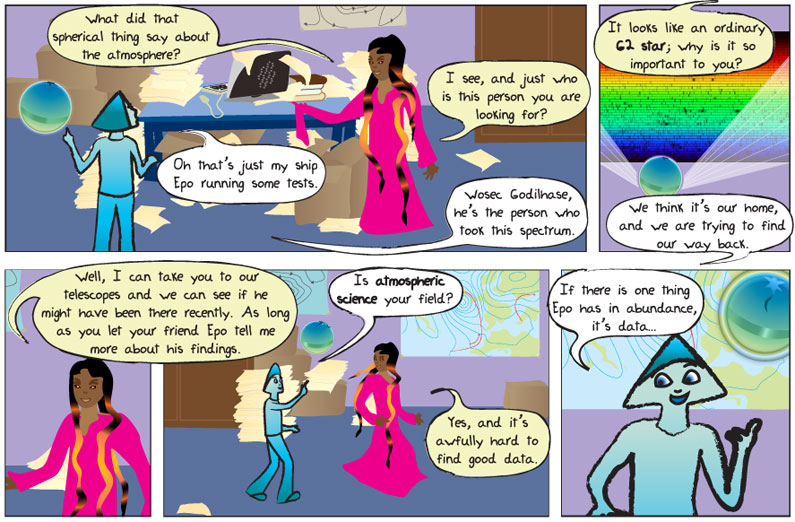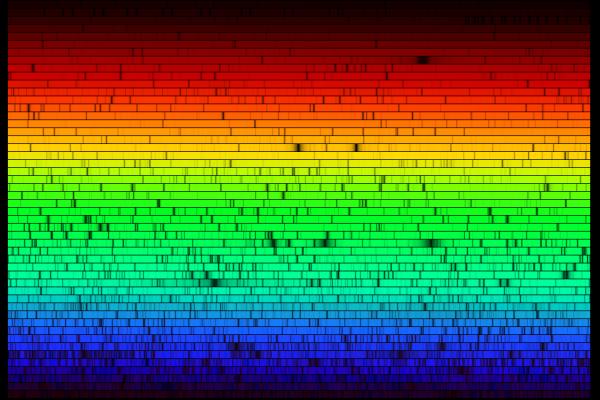
Comic Transcript
Panel 1.
Professor 2: What did that spherical thing say about the atmosphere?
Alkina: Oh that’s just my ship, Epo, running some tests.
Professor 2: I see, and just who is this person you are looking for?
Alkina: Wosec Godilhase, he’s the person who took this spectrum.
[RIA displays spectrum]
Panel 2.
Professor 2: It looks like an ordinary G2 star; why is it so important to you?
Alkina: We think it’s our home, and we are trying to find our way back.
Panel 3.
Professor 2: Well, I can take you to our telescopes and we can see if he might have been there recently. As long as you let your friend Epo tell me more about his findings.
Panel 4.
[Alkina notices atmospheric and weather pattern charts on walls.]
Alkina: Is atmospheric science your field?
Professor2: Yes, and it’s awfully hard to find good data.
Panel 5.
Alkina: If there is one thing Epo has in abundance, it’s data…
What does it mean?
G2 star – Our Sun is a type G main sequence star, but more specifically, it is a type G2V. The “G” means that it’s a yellow star. The “2″ means that it is about 2/10ths of the way between a yellow “G” and an orange “K.” These arbitrary letter designations are historical in origin and are based on atomic absorption lines in the star’s spectrum. The “V” is a Roman numeral 5. It means the star is a main sequence star, often known as a dwarf star.
Atmospheric science – The study of the atmosphere, its processes and the interactions between the atmosphere and other systems, especially the oceans. Atmospheric Science includes fields like meteorology (the study of weather systems) and climatology (the study of climates and climate change).
In human speak please!
You may have noticed the image of the spectrum in the comic, here is the full version:

Credit: N.A.Sharp, NOAO/NSO/Kitt Peak FTS/AURA/NSF
You may well be wondering just what all the lines and colors mean. The colors represent the complete visible spectrum of the Sun, called the continuum, from red to violet. You can see this same pattern in a rainbow, which is, after all, the colors of the Sun spread out by water droplets in the atmosphere. The continuum is produced at the bottom of the photosphere, the visible “surface” of the Sun. Every dark line represents a wavelength of light that our Sun absorbs in the upper, cooler layers of the photosphere. Because these wavelengths do not reach us, we see dark gaps in the bright continuum of the Sun at those places. These lines can help us identify the atomic composition of our Sun because they correspond to atomic transitions in the atoms in the Sun. The vast majority of these lines are due to iron, which has a very complicated spectrum. Other lines are caused by calcium, magnesium, sodium, and other atoms.
A video on how emission lines helps astronomers determine properties of stars. It also highlights how women have made enormous contributions in this area.
